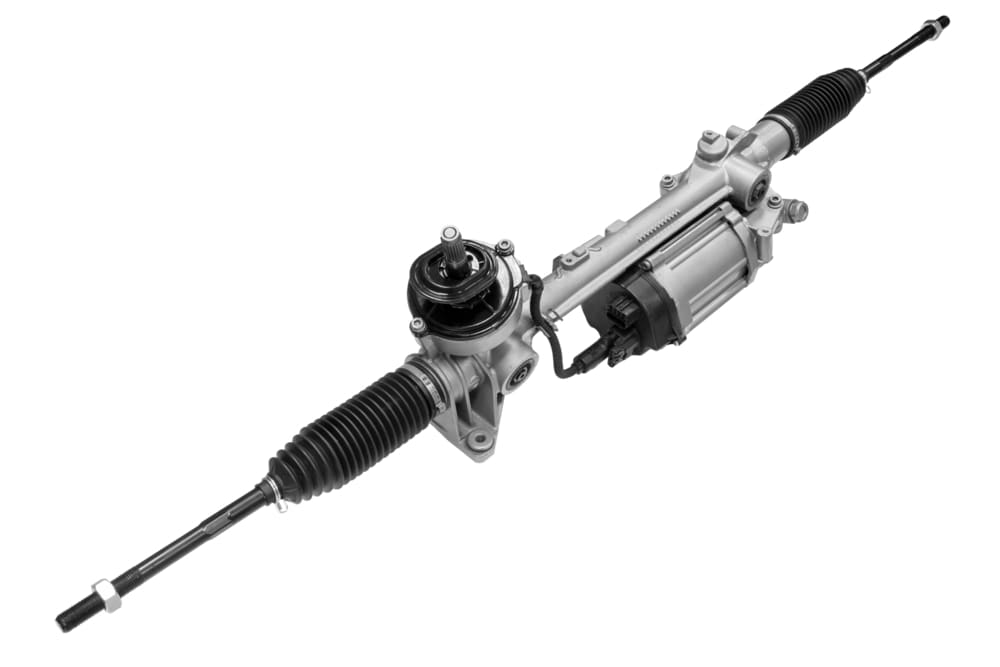

The steering system on any vehicle is comprised of multiple components that work in conjunction to permit the vehicle to safely turn left or right. One of the most overlooked pieces of the steering system is the steering gear adjuster plug, which is located inside the steering box. Over a period of time and with extensive use on and off road, this adjustment device will loosen or break, causing multiple problems from a loose steering wheel to a completely broken steering system.
In order to work efficiently, the steering system must be correctly aligned, and all connects securely tight. This is the job of the steering gear adjuster plug. When the steering gear "lash" is adjusted correctly, the steering will feel responsive, solid and will enhance the overall performance of your vehicle. If the steering gear adjuster plug is loose or broken, it can lead to potentially dangerous driving conditions.
There are several warning signs that any driver can recognize that will alert them to potential problems with the steering gear adjuster plug or components inside the steering box that permit it to operate effectively. Listed below are a few signs to watch for that could signal a bad or failing steering gear adjuster plug.
1. Steering wheel feels loose
Although the steering wheel is attached to the steering column, a broken steering gear adjuster plug located inside the steering box can produce a loose steering wheel condition. This is typically recognized by physically being able to move the steering wheel up and down, left to right or in a circular motion inside the steering column. The steering wheel should be solid inside the steering column and never move. As such, when you feel this condition in your steering wheel, contact a certified mechanic as soon as possible, so that they can road test, diagnose and repair the problem immediately.
2. Leaking power steering fluid
Although the steering gear adjuster plug is located inside the steering box, leaking power steering fluid may be a warning sign of a problem with this adjustment device. When the steering gear is loose, it tends to create additional heat inside the steering box, which can cause seals and gaskets to wear prematurely. This is what commonly causes power steering fluid to leak. In fact, most power steering fluid leaks are caused by a malfunctioning steering gear adjuster plug. Power steering fluid can easily identified as it typically has a burnt smell. If you notice power steering fluid on the ground, under your car; contact an ASE certified mechanic to repair this condition before driving too much.
3. Steering wheel is difficult to turn
When the steering gear adjuster plug is faulty, it can also tighten significantly. This will lead to a situation in the steering wheel where it's hard to turn or will feel as if it is fighting your input. If you notice that the steering wheel is much more difficult to turn than normal, it could be caused by the steering gear adjuster plug being too tight. Sometimes a mechanic can simply adjust the clearance of the adjuster plug to correct settings if caught early enough; which is why it's important to contact a mechanic as soon as you notice this problem.
4. Steering wheel shakes while driving
Finally, if you notice that the steering wheel shakes violently while you are driving slower but settles down when you're driving at highway speeds, this is also a symptom of a broken steering gear adjuster plug. When the steering gear is loose it will rattle the steering input shaft, the steering column and eventually the steering wheel as the vehicle begins to move forward. Sometimes this situation will clear up as the vehicle accelerates and in other situations it will get worse the faster you drive.
Anytime you experience shaking in the steering wheel, it's typically due to loose components on your car, from vehicle suspension to tire issues, and sometimes a small mechanical piece like the steering gear adjuster plug. When you notice any of the above warning signs, contact a local ASE certified mechanic so they can properly diagnose the problem and efficiently fix what might be causing the issues.



